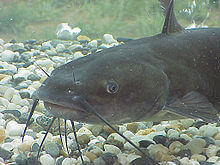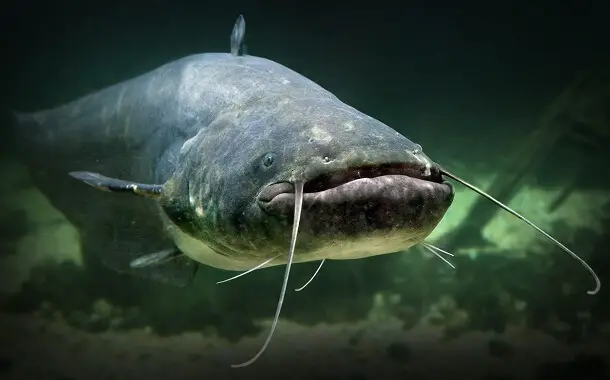How Much Does a Catfish Cost?
Last Updated on February 20, 2024
Written by CPA Alec Pow | Content Reviewed by ![]() CFA Alexander Popinker
CFA Alexander Popinker
The price of catfish can vary quite a bit depending on whether you’re buying it for consumption or as an aquarium pet. Factors like the catfish species, size, source, and market conditions all impact the final cost. This article will provide a detailed look at catfish pricing for both culinary and ornamental purposes.
Catfish have become a popular food option due to their affordability and mild flavor. They are also common aquarium fish that are relatively easy to care for. But with so many different types of catfish out there, how do you know what’s a fair price to pay? Read on for a breakdown of the key considerations around catfish costs.
How Much Does a Catfish Cost?
The minimum cost for catfish is typically around $3 to $6 per pound for farm-raised fillets, while specialty gourmet catfish species like sturgeon or Wels catfish can reach prices of $14 to $25 per pound, depending on the variety and sourcing.
The most common catfish sold for human consumption in the U.S. are channel catfish and blue catfish varieties. These farm-raised freshwater fish have a mild, sweet flavor profile.
Farm-Raised Catfish Costs
The average cost of farm-raised catfish fillets is $3 to $6 per pound at most grocery stores and fish markets. This can translate to around $1.50 to $3 per fillet, depending on fillet size and thickness.
Larger, mature catfish typically exceed 2 pounds in size. These jumbo catfish may retail for $7 to $10 per pound, due to their higher meat yield and portion size.
Farm-raised catfish prices tend to be consistent year-round since production occurs indoors in climate-controlled facilities. This allows for a steady supply to meet market demand.
Wild-Caught Catfish Costs
Fishermen harvest wild catfish species like blue, channel, and flathead catfish from lakes, rivers, and streams. The average price per pound is $4 to $8 for whole wild-caught catfish.
Catfish fillets from wild fish usually sell for $7 to $12 per pound at specialty fish markets and restaurants. More variability exists in wild catfish pricing since supply depends on seasonal fishing yields.
Buyer Tips for Culinary Catfish
When buying catfish for cooking and eating, opt for thicker, 6–8-ounce fillets to get the best value. Ask trusted fishmongers for their recommendations on high-quality, sustainably caught catfish options for the best flavor.
Gourmet Catfish Species
Certain specialty catfish command a premium price tag due to their unique taste and texture. Some examples include:
- Sturgeon catfish – $14 to $18 per pound
- Wels catfish – $16 to $22 per pound
- Madagascar glass catfish – $20 to $25 each
These gourmet wild-caught catfish varieties appeal to upscale restaurants and discerning home chefs. However, always verify the sustainable sourcing when purchasing more exotic catfish.
According to the Selina Wamucii website, the approximate wholesale price range for U.S. catfish is between $2.70 and $4.05 per kilogram or between $1.23 and $1.84 per pound. The retail price range for U.S. catfish is between $3.86 and $5.79 per kilogram or between $1.75 and $2.63 per pound.
At Walmart, you can find Big Easy Foods US farm-raised catfish fillets, frozen, 2 lb bag: $17.98, which equates to approximately $0.56 per ounce.
Simmons Catfish sells 4 lb. Carton Catfish Fillet Bites at $14.00.
Catfish Pricing Factors
The cost of catfish is influenced by a number of variables, including:
- Catfish species – Some types are rarer or more prized than others, affecting market value.
- Size – Larger, mature catfish command a higher price per pound.
- Source – Wild-caught or farm-raised catfish have different price points.
- Market availability – Regional prices fluctuate based on supply and demand.
- Special features – Unique colors or patterns may increase ornamental catfish value.
Whether buying catfish fillets for dinner or an aquarium catfish as a pet, understanding these pricing factors allows buyers to find the best deals.
Costs Associated with Aquarium Catfish
Keeping catfish as aquarium pets can be an enjoyable hobby, but also requires some financial investment. Here is an overview of the purchase costs, tank setup expenses, and ongoing care needed for popular catfish species.
Buying Aquarium Catfish
Most pet stores sell juvenile aquarium catfish for $2 to $15 each, depending on type, size, and color morphs. More exotic species can cost up to $50 per fish.
When buying, look for active catfish displaying natural behaviors and free of disease. Reputable aquarium stores offer healthier fish.
Initial Aquarium Setup
Beyond the catfish themselves, owners need to purchase a tank, equipment, decor, and plants to create a suitable habitat.
- Basic 10-gallon aquarium kit – $50 to $100
- Necessary filtration and heating – $50 to $150
- Gravel, plants, wood, and rocks – $100 to $300
Starting a new catfish tank can cost $200 to $500, depending on size. Always research the needs of specific catfish species first.
Ongoing Catfish Care Costs
Caring for pet catfish also involves some recurring expenses:
- High quality fish food – $10 to $20 per month
- Water treatments and testing kits – $10 to $30 per month
- Filter media replacement – $10 to $20 every 1-2 months
- Electricity for equipment – $5 to $15 per month
Responsible catfish owners should budget $30 to $60 per month for upkeep and supplies after the initial tank establishment.
You might also like our articles about the cost of Marlin Fish, Betta Fish, or Puffer Fish.
Factors Influencing Catfish Pricing
Many elements work together to determine the retail cost per pound or price per fish for different catfish species and markets.
Catfish Size – Larger, mature catfish typically command a higher market price because they yield more edible meat. Smaller juveniles are cheaper for aquarium buyers.
Catfish Species – Rarer and more colorful species are more expensive. Common channel catfish are affordable, while exotic imports like glass catfish fetch higher prices.
Wild-Caught vs. Farm-Raised – Wild catfish prices fluctuate more than farmed fish. But wild fish may sell for higher premiums in upscale markets.
Regional Availability – Areas with local catfish farms or ample wild fisheries see lower prices due to better supply.
Store Reputation – Better quality fish stores and ethical sourcing practices justify higher retail pricing. Discounts may indicate lower fish health.
Tips for Buying Catfish
 Follow these guidelines when purchasing catfish to get the best deal for your needs:
Follow these guidelines when purchasing catfish to get the best deal for your needs:
- Check market prices online for price comparisons.
- For eating, pick thicker fillets around 6-8 ounces.
- Seek out sustainably caught wild fish when possible.
- Select lively aquarium catfish displaying natural behaviors.
- Research tank size and care needs before buying aquarium catfish.
- Find reputable aquarium stores with healthy fish and expertise.
- Budget extra for specialty catfish species and tank setup.
Final Words
The cost of buying catfish – whether for dining or as pets – involves weighing many factors like type, size, source, and quality. While pricing varies quite a bit, buyers can make informed decisions when armed with accurate information.
With some research and budgeting, both home chefs and aquarium enthusiasts can enjoy these unique and tasty freshwater fish.
Frequently Asked Questions
How much money does a catfish farmer make?
According to the USDA, full-time catfish farmers earn an average net income of $20,000 to $30,000 annually from catfish farming operations. Profitability depends heavily on pond acreage, stocking density, and market catfish prices each year.
More extensive catfish farming enterprises with greater production volumes can generate over $100,000 in annual sales. However, catfish farming involves substantial overhead costs for fish feed, maintaining ponds, and harvesting expenses that must be accounted for. Overall, catfish farming can be a profitable endeavor with good management and favorable market conditions.
How long does it take for catfish to reach market size?
On commercial catfish farms, it takes approximately 12-18 months for catfish to reach a harvestable market size of 1.5 to 2.5 pounds. Farmers allow juvenile catfish purchased from hatcheries to grow in ponds for a full summer until they reach around 1 pound in size. The catfish are then “overwintered” through the colder months when growth slows.
In the second summer, the catfish continue feeding and growing rapidly to hit target market sizes for processing. Careful feeding regimes and pond maintenance help catfish achieve optimal growth rates to reach harvest size within this timeframe.
Is catfish farming profitable in the USA?
Overall, catfish farming remains a profitable industry in the United States, though rising costs have made margins tighter in recent years. U.S. catfish growers produced over 600 million pounds in 2021, generating total sales over $380 million.
While domestic catfish production has decreased in the last decade due to foreign imports, consumer demand and market prices have rebounded.
Careful business planning and efficient production methods allow U.S. catfish farms to remain economically sustainable. States with the most significant catfish farming include Mississippi, Alabama, Arkansas and Texas. The profitability prospects for new or expanding catfish farms look favorable, as long as farmers understand production costs and risks.



Leave a Reply
Want to join the discussion?Feel free to contribute!